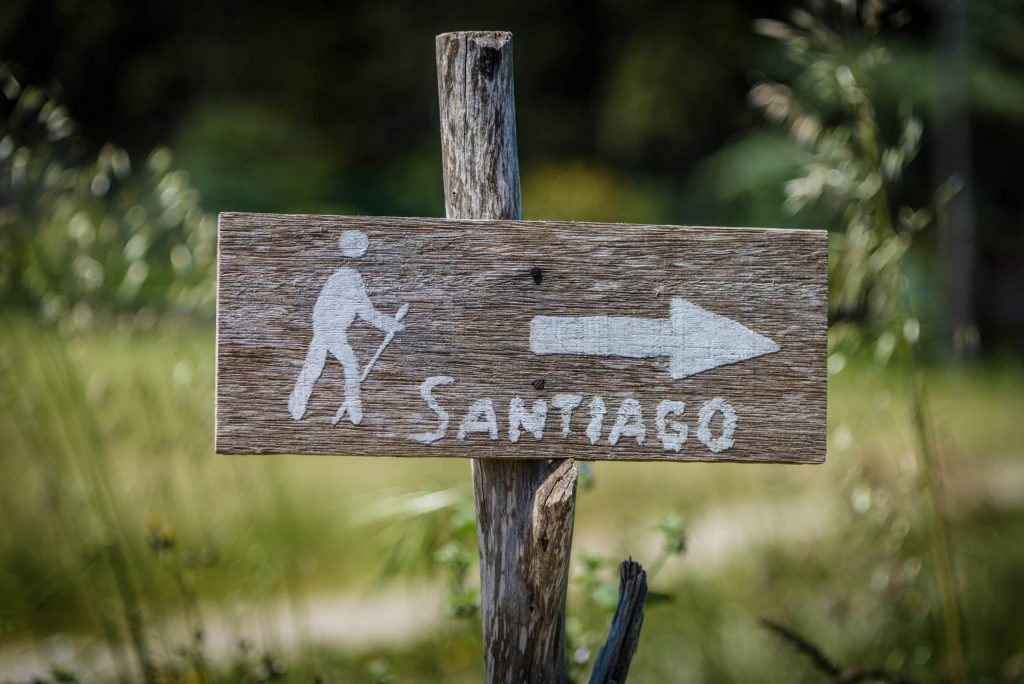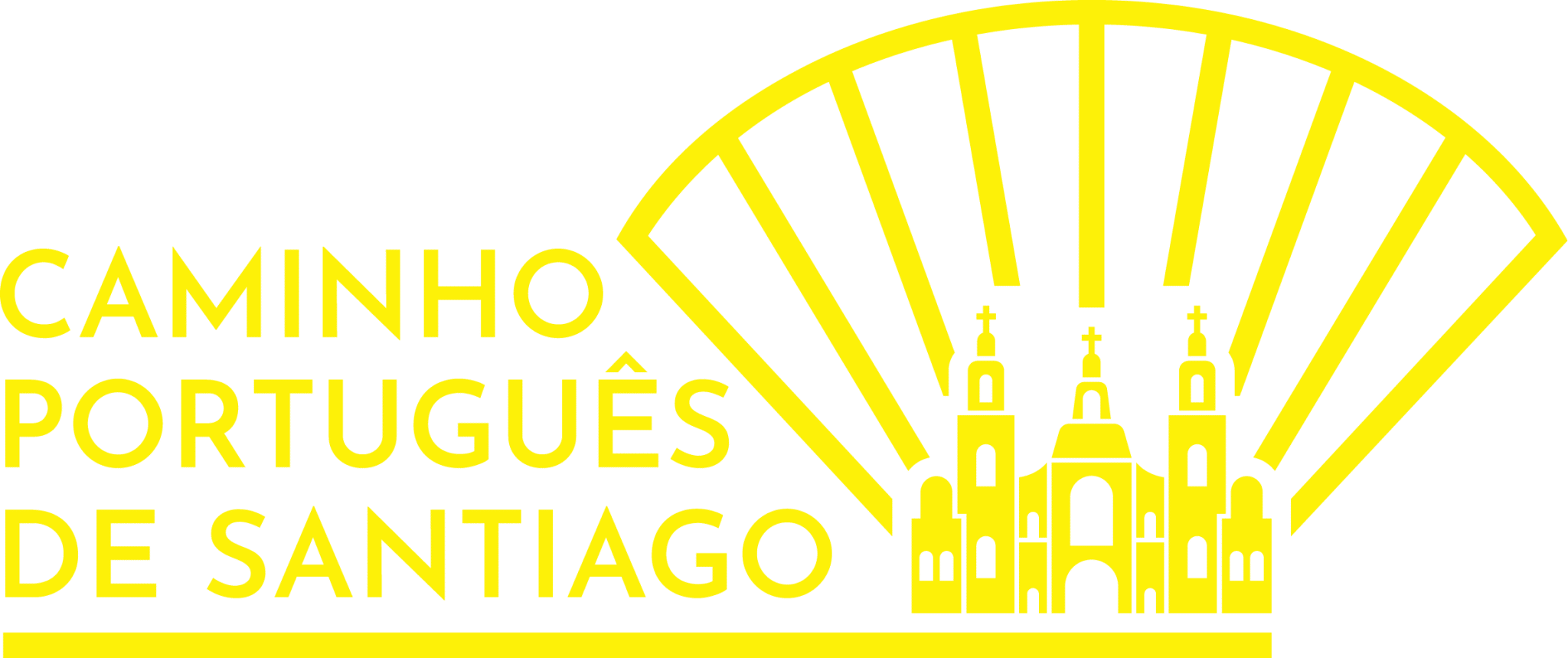Many people who want to walk the millennial trek don’t do it because they think it takes weeks or even months. However, they couldn’t be more wrong. In fact, if you are in shape you can even do it in 4 short days, or even 3, if you ride a bike. However, today we are going to talk about those who have a week to walk. Yes, it is possible in just 5 days to reach Santiago de Compostela and receive the final document. Come and find out how in this article!
To finish the Portuguese Way to Santiago in 5 days seems impossible, but it isn’t. To receive the Compostela, the official document of those who make a pilgrimage to the city of the Apostle, you “only” need to walk 100 kilometers. That is the minimum distance to say that someone has officially completed our favorite route.
To do this on the same days as a working week, you will have to take the central crossing. This one, despite its name, doesn’t have to start in the middle of Portugal. Many pilgrims even start in Galicia, more precisely, in Tui.

What you need to bring to complete the Portuguese Path to Santiago in 5 days.
On the trail, the less the better. Therefore, we recommend that in addition to your backpack, you also carry:
To complete the Portuguese Way to Santiago in 5 days, or any nature trail, all you need to do is bring a change of clothes. Even if you stay for more days, this advice still holds. This is because in the hostels you can wash your hiking clothes manually or even in the washing machine.
- Your documents.
This may be the most important point. Without documents you can’t enter the resting places, there’s no access to the pilgrim menu, and if you injure yourself and you’re in a foreign country, you’re going to pay a lot of money to go to the doctor. So don’t forget to:
1) ATM card
2) Pilgrim’s Credential
3) Citizen’s Card
4) European Health Insurance Card
If you have traveled within the European Union you should already have it. However, if this is not the case, it is easy to acquire. Just go to https://www.seg-social.pt/inicio and ask for yours.
For foot blisters there is nothing better than Compeed. However, don’t forget Band-Aids, Betadine, and even sunscreen.
- Basic hygiene products
Toothbrush and toothpaste, space-saver 3-in-1 shower gel, and sunscreen. Try to put everything in a small case to save on available space.
To learn more about what to carry in your backpack, we have a full article here!
In which city do I have to start?
To do the Portuguese Way to Santiago you must start in Tui.
There are several ways to get to this first city on the path. Besides the convenient hitchhiking, public transportation offers a good alternative to cars. If you are coming from abroad, the closest airports to Tui are Vigo, Porto, and Santiago de Compostela.
- From Vigo is the most comfortable trip. The railway connects directly to the town that borders Valença, but it only passes twice a day. In the morning and in the afternoon, taking 45 minutes to travel 25 km. For those who have no special interest in trains, there are always buses. They operate daily, with higher frequency than the first option, and are as cheap or cheaper. It’s a matter of preference and timetables.
- From Porto, on the other hand, there are really only shared cars here. They are a little more expensive when compared to going via Vigo, however, the distance is longer.
- From Santiago de Compostela, despite being the Galician capital, it might be the most uncomfortable trip of the three. Trains stop in Pontevedra, forcing you to take a bus to your desired destination.
Steps for the journey ahead.
Here you can see how to do the Portuguese Way to Santiago in 5 days. We have divided the days into stages, to make it easier for you to absorb all the information.
Stage 1: Tui – Mos
In Tui, you are welcomed by the Galician vegetation. The woods along the way in Spain are filled with people – pilgrims and others – making the trip a nice meeting of languages, faces, and “buen camino” during the day. Sometimes you can find musicians playing and commerce settles in the spaces where the green combines with main roads. This route is simple, as there are no major climbs to record. Just the natural beauty of this region.
That is until you get to Porriño, a town that lives divided between the pilgrims and its industrial dynamics. With a road loaded with trucks, there are monuments and pieces of art in the center scattered throughout the town. For those who want to end the day here, they have lodging options too.
As you leave, you find the tarmac again. Cars, trucks, and long roads with narrow sidewalks. You can’t be too careful especially just before the climb to Mos. From here on, you completely leave the bustle of the city, with the drowsiness of the heat and the shelter of the low population density. Ever uphill, Mos is a lost village with a nice church that is not shy when it rings its bells. The perfect village to rest until the next day.
Stage 2: Mos – Pontevedra
The Mos – Pontevedra stage is one of the most difficult of the whole Way to Santiago, but it is also one of the most beautiful.
Right at the start there is a half kilometer climb that takes you to a less winding road with local shops, always available to welcome hungry or thirsty pilgrims.
However, whoever goes up has to come down and the arrival in Redondela is extremely steep, making it difficult for walkers to cross. It is important to be careful: you can easily fall and get hurt.
Here, the route becomes more urban again, but the small town has a certain charm. It is the perfect place to have lunch or a snack, as the town has good infrastructure for pilgrims, since the coast path joins the central path.
From here on, you are graced with a simpler route. You slowly make our way through the forest trails and the small villages along this route, until we reach Pontevedra. A city that never sleeps.
Stage 3: Pontevedra – Caldas de Reis
The Pontevedra – Caldas de Reis stage is a pleasant journey, without major difficulties. After the departure by Ponte do Burgo, the crossing becomes simple, with no elevations to register and with an excellent harvest of churches and other religious monuments.
The vines surround the houses and accompany you along the route that, by its humility, gives you time and desire to enjoy every step. Before you meet the N-550 road again, you have an area of waterfalls. It is a small detour that is worth the time.
Then, quickly, you are in Caldas de Reis. You are greeted with a gentle village and a town center where wyou feel like resting and pondering the road traveled so far.
Stage 4: Caldas de Reis – Padrón
The Caldas de Reis – Padrón stage is, for many, one of the most beautiful of the whole Way to Santiago. In these last moments of pilgrimage, it is common to see more and more people along the paths, more accommodations and, mainly, more commerce on the roads that take you to the Galician capital.
With a small climb along the way, this journey does not present any major difficulties. Even local people walk these routes, as an exercise for the whole family.
Before you know it, you are in the middle of the Spanish forest, with ancient Roman roads, to get into the spirit of the first pilgrims. As a culmination, Padrón looks like a replica of a city from the ancient empire of Caesar Augustus, with its brown tones and architecture unlike the rest of the region. It is time to sit down and order the peppers that inherit the city’s name.

Stage 5: Padrón – Santiago de Compostela
The Padrón – Santiago de Compostela stage is a return to the urban trails designed with cars in mind. After the Roman city, you start your way through the last forest you will find. The rest of the journey is back to the road that has accompanied you over time. THE N-550.
The crossing takes place in a space of social transformation, between villages and modern cities, like O Milladoiro.
The arrival in the much desired capital is a whirlwind of emotions and feelings, always in the company of other pilgrims, visitors and inhabitants of the Galician capital. As you follow a straight line, you are greeted by the Chapel, the Obradoiro square and the end of your adventure.
It’s time to harvest the fruits of the walk, rest, and start planning the next one.
In how many days can you cover the millennial trail?
Now you know how to do the Portuguese Way to Santiago in 5 days. Make the most of it, organize your week and follow the ancient route that awaits each one of us. You already have the adventurous spirit, all you need is the experience!
Join the 60,000 pilgrims in our group for tailor-made help with people interested and passionate about this trail here: https://www.facebook.com/groups/796460957477202
